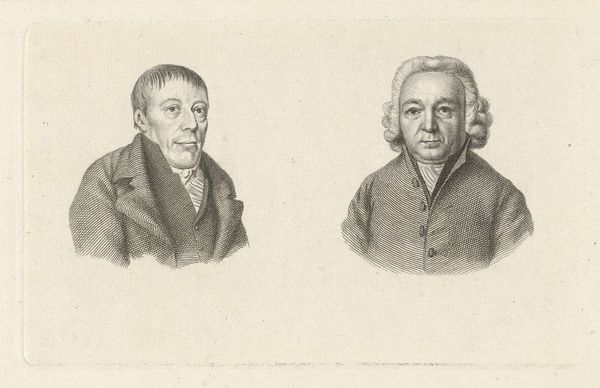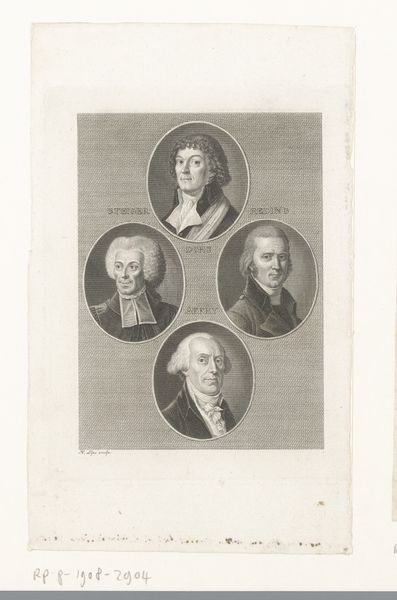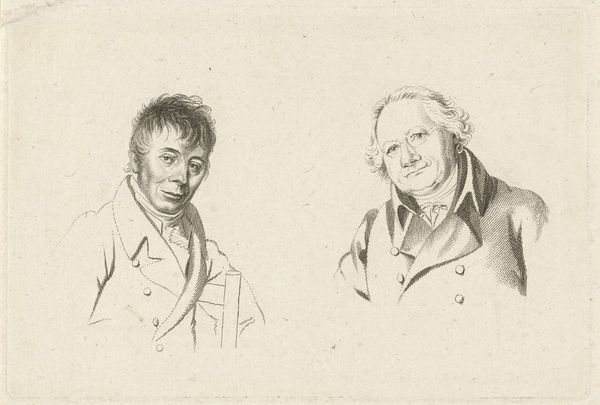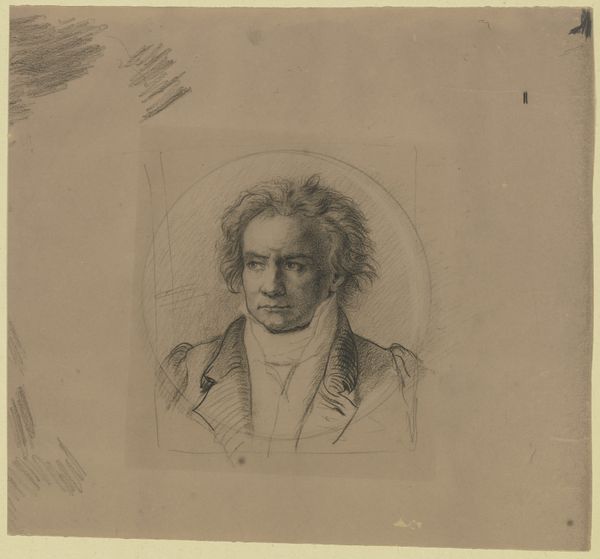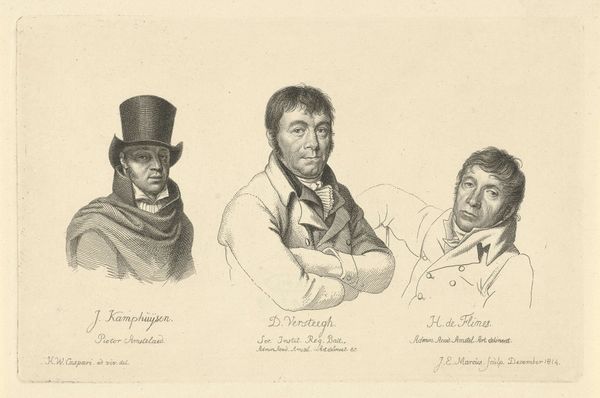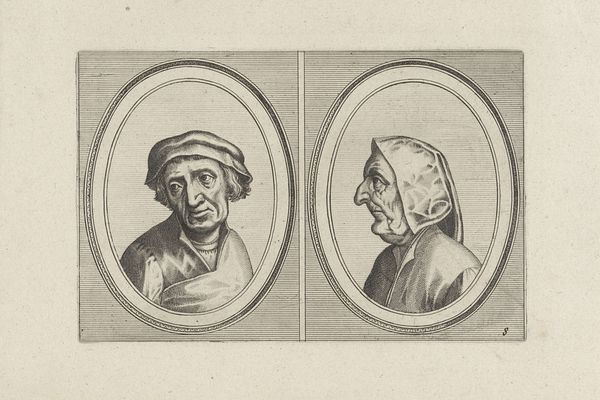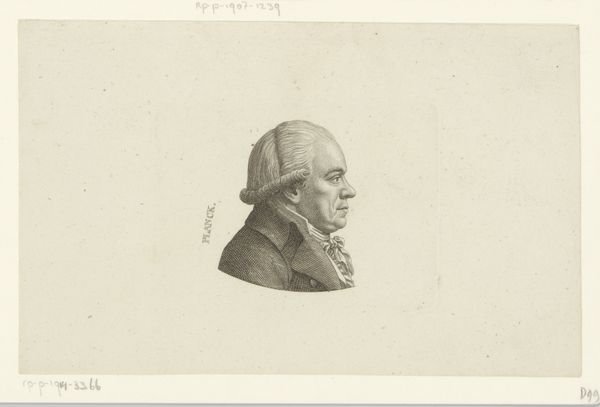
drawing, print, paper, engraving
#
portrait
#
pencil drawn
#
drawing
#
neoclacissism
# print
#
pencil sketch
#
paper
#
portrait reference
#
portrait drawing
#
engraving
#
realism
Dimensions: height 130 mm, width 196 mm
Copyright: Rijks Museum: Open Domain
Editor: This is "Portretten van Joannes Wilmet en Johannes Kinker," created by Jacob Ernst Marcus in 1814. It's a print made from an engraving and shows two gentlemen, each in their own little vignette. There is a clear contrast in tone in this work. The figure on the left seems relaxed, while the figure on the right appears more stoic. How do you read these visual choices in this double portrait? Curator: The choice to portray these men through a Neoclassical lens invites us to consider their social standing and the historical context. Do you notice how this print embodies enlightenment ideals through its clarity, balance, and emphasis on reason as seen by each man’s gaze? How might their representation uphold or subvert societal norms of the time? Editor: I do see what you mean with the Neoclassical ideals. I hadn't considered that before. What kind of societal norms would this have been playing into or pushing against? Curator: Consider the role of men of intellect during the Enlightenment, particularly within Dutch society. Were they seen as upholders of tradition or harbingers of change? Think about the French Revolution's ripple effect across Europe. Were Marcus and his subjects—Joannes Wilmet and Johannes Kinker—advocating for reform through these images, or solidifying existing power structures by portraying these individuals with dignity? What social position would be reinforced through this type of aesthetic decision? Editor: That makes sense. The subjects, in their bearing and attire, seem to belong to the privileged class. Curator: Exactly. How does this print then navigate that tension? It appears Marcus immortalized these figures but did he also invite discourse about who is memorialized and why? Do you consider portraiture always an innocent endeavor, or potentially a social practice deeply embedded in historical power structures? Editor: I see how portraits might reinforce specific views and leave others in the shadows. This piece, in that respect, it isn't simply an image of two men, but a window into social structures of its era. Curator: Precisely, and that is how artistic output intersects with the world we inhabit. Reflecting on this portrait, what broader questions about representation and identity does it provoke for you today?
Comments
No comments
Be the first to comment and join the conversation on the ultimate creative platform.

